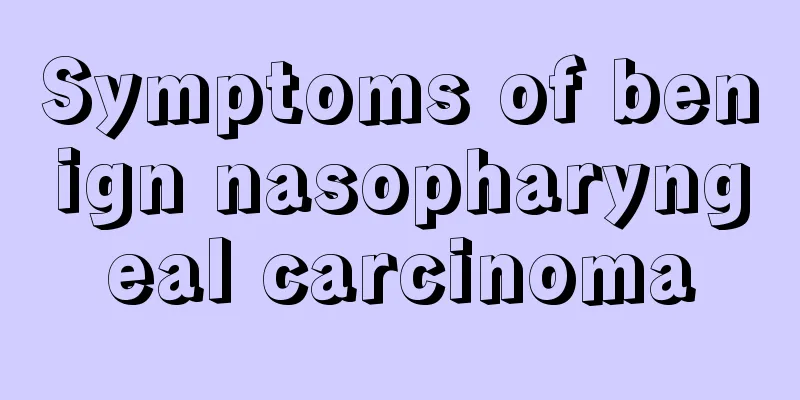What does gastric retention mean

|
Gastric retention actually refers to the accumulation of gastric contents that is not emptied in time, and this disease is closely related to diseases such as peptic ulcers or pyloric obstruction. Patients are prone to vomiting, abdominal pain or upper abdominal distension, and tenderness in the upper and middle abdomen. Therefore, when these symptoms appear, we must pay attention to them and treat them scientifically. 1. Overview Gastric retention or delayed gastric emptying refers to the accumulation of gastric contents without timely emptying. Vomiting of food ingested 4 to 6 hours ago, or fasting for more than 8 hours with a residual volume in the stomach greater than 200 ml, indicates the presence of gastric retention. This disease is divided into two types: organic and functional. The former includes pyloric obstruction caused by peptic ulcer, and pyloric obstruction caused by primary or secondary cancer compression and obstruction in the gastric antrum and its adjacent organs. 2. Symptoms and Signs If there is vomiting of old food and there is a gurgling sound in the abdomen when the stomach is empty, it is gastric retention. It can be confirmed by drawing food out of the stomach cavity through a gastric tube 4 hours after eating. During a gastrointestinal barium meal examination, if 50% of the barium is still retained after 4 hours, or if it is not emptied after 6 hours, it is evidence of this disease. Attention should be paid to the differentiation between organic and functional gastric retention. The former increases gastric motility, while the latter reduces gastric tension and reduces gastric motility. Vomiting is the main manifestation of this disease, which can occur day or night, 1 to several times a day. The vomitus is often old food, generally does not contain bile, and upper abdominal distension and pain are also common. The abdominal pain may be dull, colic, or burning pain. The symptoms can be temporarily relieved after vomiting. Acute patients may suffer from dehydration and electrolyte metabolism disorders; chronic patients may have malnutrition and weight loss. Severe or long-term vomiting may cause alkali poisoning and hand and foot cramps due to the massive loss of gastric acid and potassium ions. Physical examination may reveal signs of dehydration, with distended upper abdomen, tenderness in the middle and upper abdomen accompanied by splashing sounds, a gastric shape, and enhanced gastric peristaltic waves from left to right, which often indicate obstruction at the gastric outlet. If only a gastric shape is seen without peristaltic waves, it indicates lack of gastric tone. 3. Treatment Methods 1. General treatment: Provide a low-residue diet and supplement vitamins and trace elements. 2. Correct the imbalance of water, electrolytes and acid and alkali. 3. Symptomatic treatment, giving drugs that promote gastric motility (metoclopramide, domperidone). |
Recommend
Is pit and fissure sealing good?
I believe that everyone is still relatively unfam...
What should I do if I become darker after military training
Nowadays, whether it is high school or university...
Can brain cancer in the elderly be cured?
The brain is our soul. If the brain does not work...
The two main types of lung cancer
Lung cancer is mainly divided into two types base...
Can I drink soy milk on an empty stomach when I wake up early?
A cup of soy milk in the morning can bring people...
Nursing routine for patients with endometrial cancer
Endometrial cancer is a disease that everyone is ...
What is the treatment for gallbladder cancer
In recent years, gallbladder cancer has become on...
What is the cause of the bulge in the middle of the neck caused by thyroid cancer
The protrusion in the middle of the neck due to t...
Can chest X-ray examine breasts?
Chest X-ray is a method of monitoring internal or...
What is the reason for heavy facial hair
Everyone must have seen body hair. Even people wi...
How to treat prostate cancer with traditional Chinese medicine
Prostate cancer is a malignant cancer with a very...
Is bladder cancer hereditary?
The so-called inheritance of bladder cancer is no...
What to do if the belly fat is too loose
Losing weight is what many people do in summer. L...
How much does an ovarian tumor examination usually cost?
The prevalence of ovarian tumors is still relativ...
What drugs can't patients with thyroid cancer use
Clinically, patients with thyroid cancer cannot u...









